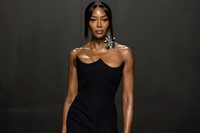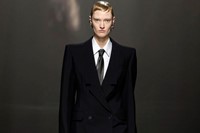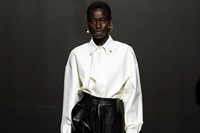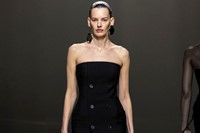Savage beauty. Those are two words from the cannon of McQueen that were entirely applicable to the Autumn/Winter 2023 show Sarah Burton staged Saturday night. They bubbled to the surface during the show, with its tailoring dissecting the body, carving out new vantage points and erogenous zones, reshaping the figure through cloth to make women (and men) taller, leaner, more dangerous. And it was there backstage, in splashes of blood-red and embroideries that resembled entrails but were actually orchids, pinned on boards alongside drawings of flayed muscles by Leonardo da Vinci.
Sarah Burton was pinned into a corner, like prey. But she was fighting, with words that came exploding out of her like a stream-of-consciousness reaction to her own creation. “Anatomy, anatomy of tailoring, anatomy of clothing. Almost back to the beginnings of McQueen, where he started, Savile Row. Revisiting the structure of garments, and the body, how you construct tailoring, but then tearing it apart and turning it on its head.” She took a deep breath. “Tailoring dissected, bodies dissected. Orchids – muscular orchids, and fragile orchids. Like a dichotomy of what it is to be a woman or a man today. An analysis of the anatomy of fashion.” She said a mouthful – but she missed that it was also about the anatomy of the Alexander McQueen label, and of her own talent as a designer.
That was all there, in clothing that captured not only the spirit of McQueen’s hard-edged beginnings – the razor-sharp cut that managed to grab attention, and then reshape the form of contemporary fashion in the 1990s – but a mood of now. The general ethos has been a paring back, a stripping down – flaying away the frills and furbelows of fashion, cutting down to the vital organs, the heartbeat of shapes. In some designers’ hands that has wound up feeling anodyne and diluted, a corporate parade of drab suits devoid of meaning. In Burton’s hands, it vibrated with feeling, a sense of the absolute essential coming through in every line.
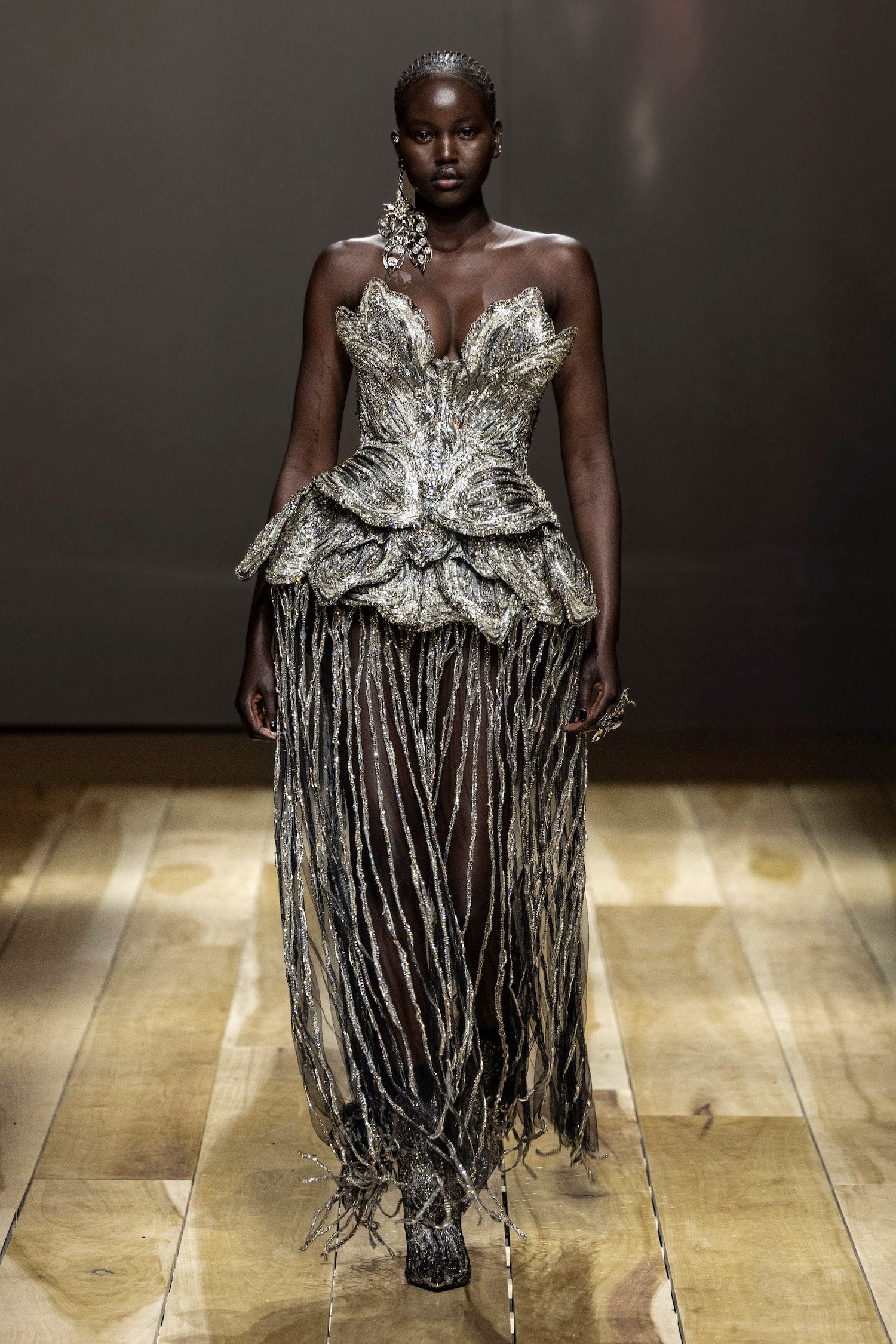

That idea was most compelling in the cut – this collection proved that few designers in the world today can tailor like Burton and her ateliers. The precision of her cut sent garments spiralling around the body, but it never felt overwrought or overworked. Orchids splayed across dresses were beautiful, but look again and they resembled exposed innards.
McQueen is a young label, but it has a heritage that can compete with the big guys. It also has a unique, if sad, succession story – and given that Burton was Lee McQueen’s right-hand woman, and friend, for almost 15 years before his death, it is a natural response to look forwards, with a trepidation of what you will find if you glance back. There is a show opening this week at Paris’ Palais Galliera museum that celebrates the fashion revolution wrought during the course of 1997: much of the change, and many of the clothes, come from McQueen’s hand. So that moment is in the air, and Burton seized the opportunity to look back and re-embrace actual garments and ideological notions that connect her McQueen now with back then. Trousers fused into shoes to elongate the leg, the opposite of McQueen’s ‘bumsters’, which attenuated the torso; there were shades of the 1998 Joan show in a red beaded evening gown, while that shoe’s music-box finale theme was played backwards as part of the show’s soundtrack. Beforehand, Naomi Campbell had opened the show in a look inspired by one worn in McQueen’s first own label show in Paris, The Dance of the Twisted Bull, inspired by matadors. Incidentally, in his 1997 show It’s A Jungle Out There, McQueen used the hides of bulls killed in the corrida by matadors – it was, he said, an allusion to the attacks on designers by critics.
There’s no chance of that here. What Burton’s collection felt like was a casting-off of fuss and complexity and a cutting-through to the very heart of the meaning of Alexander McQueen, its relevance in contemporary fashion and its place in the pantheon of the greats. It had strength yet fragility, a seductive menace. And more than any archival re-embracing, it had a sense of what feels right and relevant today, not just for McQueen but for fashion. It was, in short, a masterful anatomy lesson. And it took real guts.

